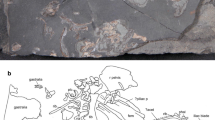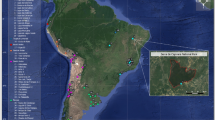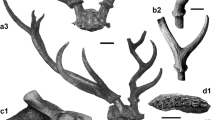Abstract
CORRECT interpretation of fossil postcranial remains is crucial to understanding primate phylogeny. This is very apparent in the study of the postcranial remains of the East African Early Miocene hominoid Dryopithecus africanus1. In 1951 Whitworth discovered a nearly complete forelimb from the Gumba Peninsula, Rusinga Island, Kenya, as part of an association with dental and cranial remains of D. africanus. The deposits date from 19 to 16 m.y.2,3. Napier and Davies3 concluded that the forelimb of D. africanus showed many features reminiscent of monkeys, for example, colobines and atelines, which supposedly use their forelimbs alone for locomotion a significant amount of the time. They further claimed that “in the absence of a priori evidence as to the probable nature of the fossil remains provided by the associated jaw fragments, it is to be doubted whether there would have been sufficient evidence from the forelimb bones alone to postulate the pongid affinities of D. africanus…”. This view has gained wide acceptance4–6.
This is a preview of subscription content, access via your institution
Access options
Subscribe to this journal
Receive 51 print issues and online access
$199.00 per year
only $3.90 per issue
Buy this article
- Purchase on Springer Link
- Instant access to full article PDF
Prices may be subject to local taxes which are calculated during checkout
Similar content being viewed by others
References
Hopwood, A. T., J. Linn. Soc., 38, 437 (1933).
Van Couvering, J. A., and Miller, J. A., Nature, 221, 628 (1969).
Napier, J. R., and Davis, P. R., Fossil Mammals of Africa, No. 16 (British Museum (Natural History), London, 1959).
Campbell, B. G., Human Evolution (Aldine, Chicago, 1966).
Tuttle, R. H., Science, 166, 953 (1969).
Clark, W. E. Le Gros, Antecedents of Man (Harper and Row, New York, 1959).
Simons, E. L., Ann. NY Acad. Sci., 102, 282 (1962).
Washburn, S. L., Condon Lectures (Oregon State System of Higher Education, 1968).
Sarich, V. M., in Perspectives on Human Evolution, 1 (edit. by Washburn, S. L., and Jay, P. C.) (Holt, Rinehart and Winston, New York, 1968).
Sarich, V. M., and Wilson, A. C., Science, 158, 1200 (1968).
Conroy, G. C., and Fleagle, J. G., Nature, 237, 103 (1972).
Lewis, O. J., Nature, 230, 577 (1971).
Deperet, C., Arch. Mus. Hist. Nat. Lyon, 4, 45 (1887).
Oxnard, C. E., Amer. J. Phys. Anthrop., 26, 219 (1967).
Day, M. H., Nature, 215, 323 (1967).
Seal, H., Multivariate Statistical Analysis for Biologists (Methuen, London, 1964).
Tatsuoka, M. M., Multivariate Analysis (Wiley, New York, 1971).
Clark, W. E. Le Gros, and Thomas, D. P., Fossil Mammals of Africa, No. 3 (British Museum (Natural History), London, 1951).
Lewis, O. J., Amer. J. Phys. Anthrop., 36, 45 (1972).
Author information
Authors and Affiliations
Rights and permissions
About this article
Cite this article
ZWELL, M., CONROY, G. Multivariate Analysis of the Dryopithecus africanus Forelimb. Nature 244, 373–375 (1973). https://doi.org/10.1038/244373a0
Received:
Revised:
Issue Date:
DOI: https://doi.org/10.1038/244373a0
This article is cited by
Comments
By submitting a comment you agree to abide by our Terms and Community Guidelines. If you find something abusive or that does not comply with our terms or guidelines please flag it as inappropriate.



